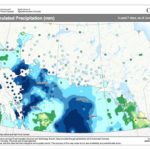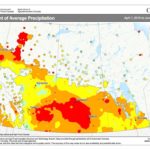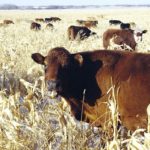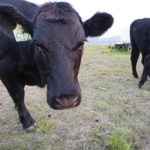Reading Time: 2 minutes Winnipeg | Reuters — With drought turning Chad Ross’s pastures brown, the southeastern Saskatchewan rancher sent 140 head of cattle to slaughter earlier than usual this spring, as the Prairies’ three-year drought made them too expensive to feed. The ranch and feedlot near Estevan has lost money two straight years. Long-awaited rains that swept the […] Read more

Rain gives farmers relief, for now, from three-year drought

Saskatchewan extends greenfeed seeding deadline
Reading Time: 2 minutes Saskatchewan farmers who still want to put in cereal crops for greenfeed with crop insurance coverage will get an extra couple of weeks to do so. Saskatchewan Crop Insurance on Wednesday announced an extension on the June 30 deadline for seeding crops for greenfeed, to July 15. Producers who have crop insurance will now be […] Read more

Prairie drought reaches tipping point
Reading Time: 2 minutes MarketsFarm — The Prairie provinces have been under the influence of a large ridge of high pressure for a number of weeks, which has produced prolonged dryness with little precipitation. That high pressure system has pushed low-pressure, precipitation-carrying systems to the south, where the U.S. Midwest has already received significant rain. Environment Canada estimated the […] Read more

Prairie dryness concerns to persist
Reading Time: 2 minutes MarketsFarm — Large areas of Western Canada remain on the dry side, with little moisture in the immediate forecasts. And while it’s still early in the growing season, the interplay of conflicting patterns from the south and north will determine whether the dry areas receive timely precipitation during the growing season. “We are looking at […] Read more

Hay prices skyrocket as Prairie drought continues
Reading Time: 2 minutes MarketsFarm — Hay prices have continued to skyrocket across the Prairies as conditions remain dry enough that many hay growers won’t produce a first cut this spring. “We’ve had a tough start here,” said Darren Chapman, chair of the Manitoba Forage and Grassland Association. “We had a cold, dry spring with frost, so first cut […] Read more

Five tips for grazing corn this winter
Corn grazing is becoming more popular across Canada because producers can grow more biomass on less land. If you are planning on grazing corn this winter, here are five tips to help you make the most of the corn grazing season:

Knowing when it’s ‘hay day’
A provincial sampling program helps producers decide the best time to cut alfalfa for maximum RFV
Reading Time: 3 minutes An alfalfa-monitoring program designed more than 20 years ago continues to pay dividends for Manitoba dairy producers and the domestic and export dairy hay industry. Manitoba Forage and Grasslands Association’s (MFGA) “Green Gold” program just wrapped up the program’s 23rd year of helping to predict “Hay Day” — the date when harvested pure alfalfa stands[...]
Read more
Read more

Four options to help deal with a feed shortage
What is your best option if you’re short on feed? “Each farm is different and therefore doing your numbers as they pertain to your situation is paramount,” said provincial economics extension specialist Herman Simons. “In addition, each option has different pros and cons, which should be listed and taken into account when determining the best[...]
Read more
Read more

Straw prices soar, piling pressure on N.Europe livestock farmers
In some areas straw now more expensive than grains
Reading Time: 3 minutes Hamburg | London | Reuters – Livestock and dairy farmers across northern Europe are paying soaring prices for straw used in food and bedding for cattle, as hot, dry weather across the region reduces crops. The higher bills put further pressure on farmers already facing one of their toughest summers ever; many have had to[...]
Read more
Read more

Nitrate accumulation a danger in hailed-out crops
The crop, its development stage, and the amount of nitrogen in the soil all need to be considered
Reading Time: 2 minutes Think about nitrate accumulation when salvaging cereal, oilseed, or hay crops damaged by hail, says a provincial beef and forage specialist. “Nitrate accumulation occurs in a plant when it is injured and is not able to convert nitrate to protein efficiently after a hailstorm,” said Barry Yaremcio. “In non-legume crops, water and nutrients are pushed[...]
Read more
Read more


